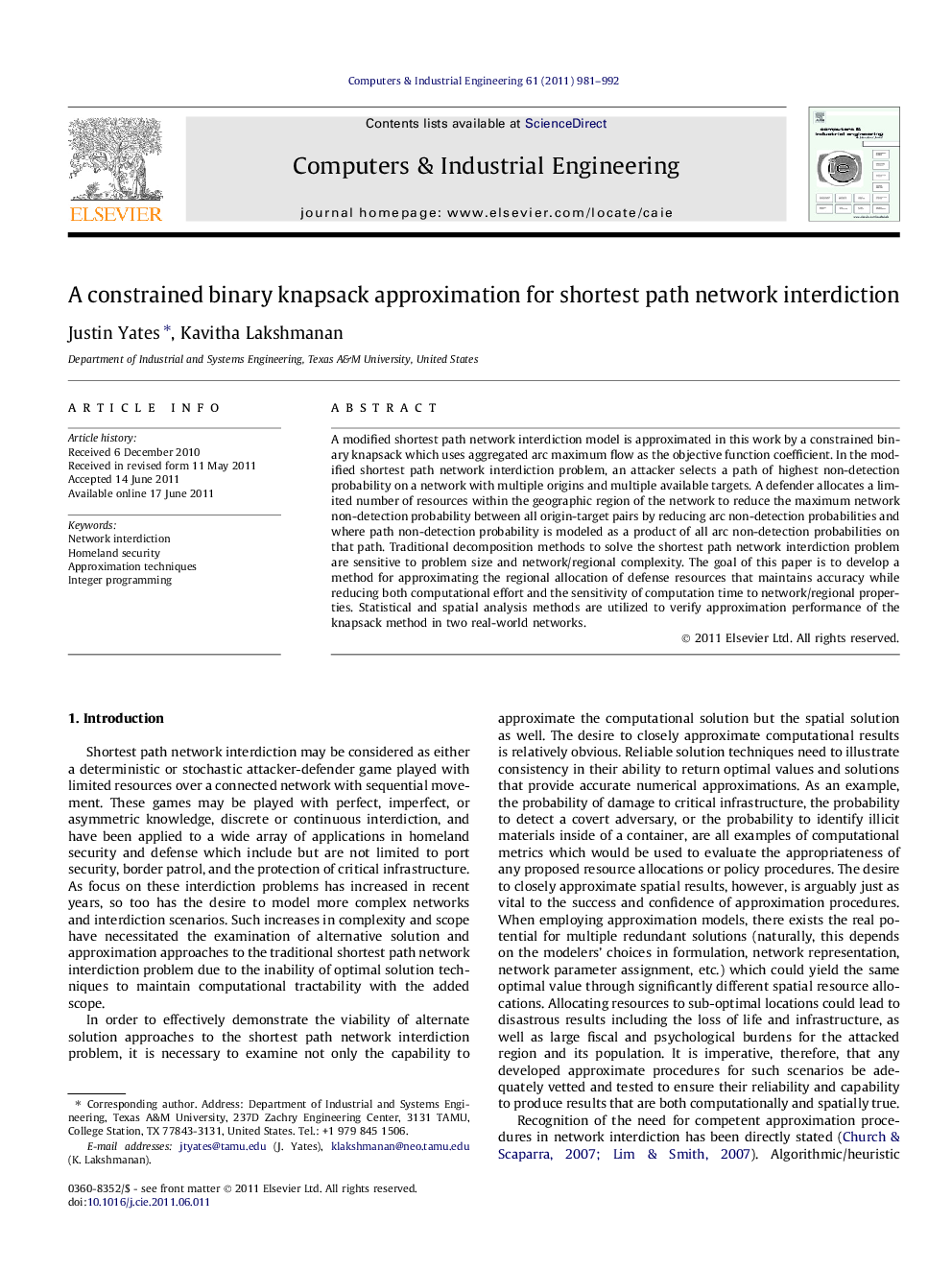| کد مقاله | کد نشریه | سال انتشار | مقاله انگلیسی | نسخه تمام متن |
|---|---|---|---|---|
| 1135582 | 956104 | 2011 | 12 صفحه PDF | دانلود رایگان |

A modified shortest path network interdiction model is approximated in this work by a constrained binary knapsack which uses aggregated arc maximum flow as the objective function coefficient. In the modified shortest path network interdiction problem, an attacker selects a path of highest non-detection probability on a network with multiple origins and multiple available targets. A defender allocates a limited number of resources within the geographic region of the network to reduce the maximum network non-detection probability between all origin-target pairs by reducing arc non-detection probabilities and where path non-detection probability is modeled as a product of all arc non-detection probabilities on that path. Traditional decomposition methods to solve the shortest path network interdiction problem are sensitive to problem size and network/regional complexity. The goal of this paper is to develop a method for approximating the regional allocation of defense resources that maintains accuracy while reducing both computational effort and the sensitivity of computation time to network/regional properties. Statistical and spatial analysis methods are utilized to verify approximation performance of the knapsack method in two real-world networks.
► We model a knapsack approximation to the shortest path network interdiction problem.
► We focus on obtaining accurate spatial solutions for resource allocation.
► An experimental design on two real-world networks demonstrates applicability.
► Approximations show 70–80% spatial accuracy with low computation time.
► The approximation significantly reduces overall computation time and variation.
Journal: Computers & Industrial Engineering - Volume 61, Issue 4, November 2011, Pages 981–992